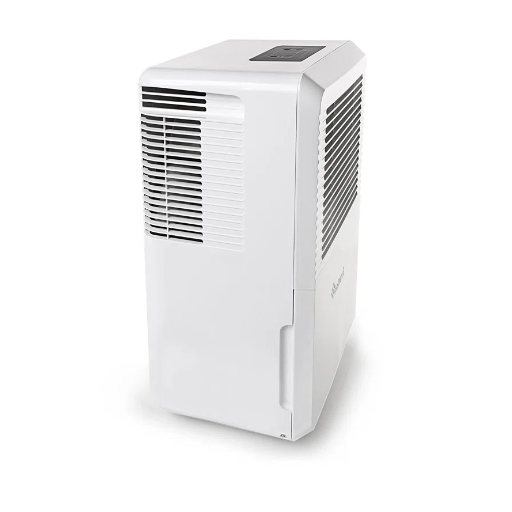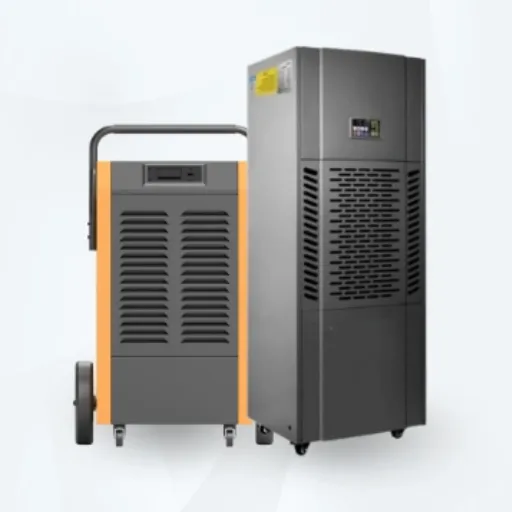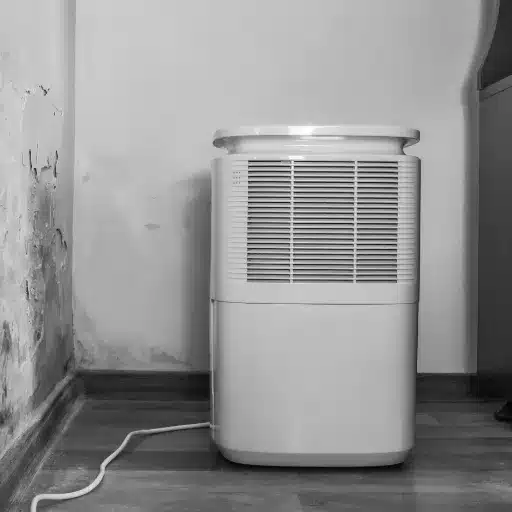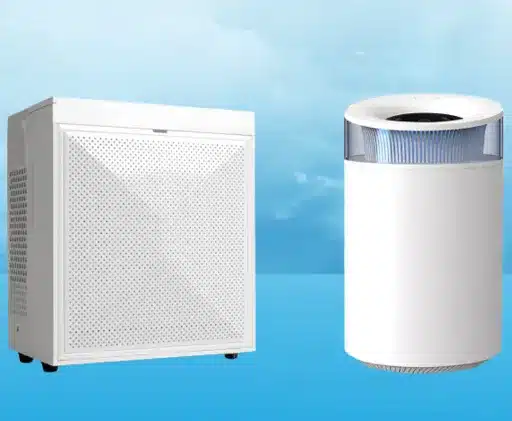When your dehumidifier starts freezing up, it can be more than just a minor inconvenience—it may signal deeper issues affecting its performance and efficiency. Understanding why this happens is crucial to maintaining a comfortable and moisture-free home environment. This article dives into the common causes behind dehumidifier freezing, practical solutions to address the problem, and the necessary steps for effective repairs. Whether you’re experiencing frost build-up on the coils or a sudden drop in functionality, this guide will provide you with the technical insights and actionable advice needed to resolve the issue and get your dehumidifier working optimally again.
Understanding Dehumidifier Freezing
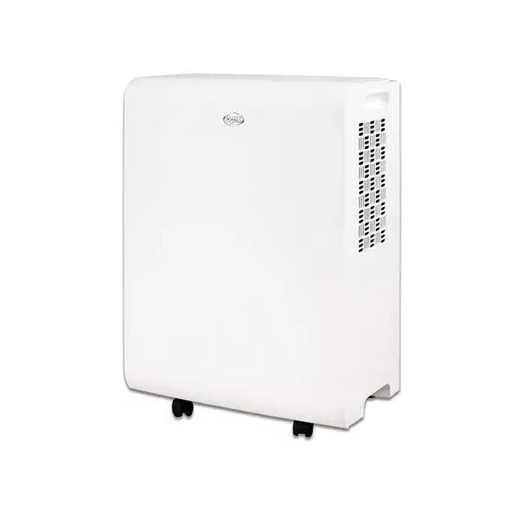
What Causes Ice to Form on Dehumidifier Coils
Ice tends to form in dehumidifier coils mostly when there are low operating temperatures and inhibited airflow. If a dehumidifier is working in a room where the ambient temperature is below 65°F, the cooling coils tend to get too cold, and the moisture in the air freezes upon contact instead of condensating into water. Dehumidifiers are not generally designed to operate across cold environments without being incorporated with some frost control.
The other factor causing ice build-up is inadequate airflow through the unit. Obstruction of airflow may take place due to clogged air filters, blocked vents, or faulty fans. Without sufficient air circulation, the coils can freeze rapidly to freezing temperatures, an ideal situation for icing. Time-to-time cleaning of filters and checks to ensure air flows properly will eliminate this issue.
There could always be refrigerant-related problems leading to coil freezing. A dehumidifier uses refrigerant to cool the coils and remove moisture, and when the refrigerant level is low due to leakage or malfunctioning of the system, the coils tend to overcool and freeze. Users should watch for any signs of the unit having been damaged and call a reputable technician should they suspect issues related to the refrigerant. Ice formation may be prevented, and dehumidifier performance maintained at an optimum level with proper operating conditions, regular maintenance, and timely repairs.
How Low Humidity and Temperature Lead to Freezing
Most freezing phenomena within the dehumidifier are caused by low humidity and temperature. If the surrounding air is too dry, there will be little moisture to be drawn by the dehumidifier to the condenser. This results in an imbalance in the surface temperature of the coils, wherein the moisture, instead of condensing, freezes. Such situations are common during unfavorable weather when outside temperatures drop below the operating range of the dehumidifier.
A cold environment aggravates this situation because most normal dehumidifiers under usual circumstances are designed to work within a few temperature ranges on the positive side of 41°F (5°C). When temperature ranges fall below a minimum of 41°F, the refrigerant inside the system cannot be able to absorb heat from the air; this, therefore, results in excessive cooling of the evaporator coils, which then freeze rather than dehumidify as water vapor freezes straight onto the surface of the coils.
To avoid freezing problems arising from low humidity and temperature, one must install a dehumidifier suited to the environment to be served. Low-temperature dehumidifiers, usually with defrost cycles and special components, are systems best suited for cold environments. Also required is keeping the room temperature above the manufacturer’s stated lowest temperature for operating and not overusing the dehumidifier in an already dry state so as to maintain its functionality and prevent ice formations on the coils.
Common Misconceptions About Dehumidifier Operation
A very prevalent myth is that manufacturers of a dehumidifier claim that one model is equally effective at any temperature or humidity level. This is far from true, as most standard dehumidifiers are built to provide optimal dehumidification from a working ambient temperature of between 65°F and 85°F with 40% RH and above. Operating your dehumidifier at low ambient temperature and without frost resistance technology would lead to dehumidification performance decrement and possible damage due to ice build-up on the coils.
Another misconception is that if you leave your dehumidifier working day in and day out, it could only give you better results. This is incorrect. Running in overly dry environments with an RH below 30% strains the unit, lowering its efficiency while increasing energy consumption. This means that dehumidifiers shall always be working between the humidity range of 30-50% for controlling moisture effectively.
Also, maybe they believe that the size of the unit, that is to say, the volume of the water tank, is the only thing that really decides its effectiveness. A capacity is important, but other characteristics matter, too, such as air circulation rates (in cubic feet per minute), energy efficiency ratios (EER), and the square footage of the environment. Choosing a dehumidifier suitable for the kind of room and environmental conditions will surely show the best performance.
Such misconceptions are typical and reflect the need for grasping the manufacturer’s recommended operating conditions. Aligning the use of dehumidifiers with these conditions will help to maximize performance, the usefulness of the appliance for a long time, and even a reduction in the yearly energy costs.
Identifying the Symptoms of a Freezing Dehumidifier
Signs That Your Dehumidifier Coils Are Icing
The icing on the dehumidifier coils is a tell-tale sign of some malfunction. Among the early warnings is the unit losing efficiency in moisture extraction, as the ice buildup restricts the air flowing over the evaporator coils. With the air’s limited contact with the coils, the process of dehumidification is hindered. Another symptom is water not collecting in the tank, thus implying that the system is facing difficulty processing the moisture due to the frozen surface. A definite physical sign is ice or frost appearing on the coils.
Other related symptoms include increased electricity consumption. It takes an iced-up dehumidifier more power to keep itself working, and over time, that is a huge shock to the bill. Such inefficiency will cause the compressor to work hard and overheat. Also, irregular cycling on-off sounds or unusual noise during operation can be freezing symptoms.
When trying to avoid icing, one should keep an eye on the external conditions of room temperature and humidity. Dehumidifiers work best within a temperature range—a general guideline is anything above 60°F (15.5°C). When temperatures dip too low, the chances of them freezing will be much higher. Routine servicing procedures, such as filter cleaning and checking airflo,w will also go a long way in avoiding ice formation, which will help the unit work reliably until you sell it.
How to Detect Freezing Issues Early
From my experience, the dehumidifier freezing problems would require some studying and observation. An initial indicator that could be noted is a loss of efficiency. If the dehumidifier is less efficient at pulling moisture from the air than before, it may well be a case of ice on the coils. You will often notice a decrease or irregular airflow from the vents as well, which could mean that the fan or evaporator is blocked by ice.
Visual inspection has been another sign I use. It helps to keep an eye on the coil of the dehumidifier since it might accumulate frost or ice when temperatures hover near the lowest operational limit of the unit. Ice formation, even if very thin, is usually a clear indicator that something needs to be done operationally, such as raising the temperature in the room or increasing airflow around the unit. This is why ensuring adequate clearance and ventilation around the units is sometimes a practical prevention.
I also look further at the sounds and cycles. A dehumidifier subjected to freezing problems could exhibit some abnormal noises, perhaps due to a strained compressor or fan that still performs suboptimal. I’ve seen in time that machines that have experienced freezing irregularities tend to cycle weirdly on and off, or simply are unable to keep the expected humidity levels. These signs are incorporated into my maintenance equations and give me an early warning of the increased likelihood of freezing problems, which, if left unmonitored, can lead to expensive repairs and inefficiencies.
The Role of Humidity and Temperature Sensors
Humidity and temperature sensors are paramount for monitoring and fostering the environment. These sensors acquire key input data to allow the system to accurately evaluate its efficiency and hence attain long-term reliability. The sensors serve to dynamically track the humidity and temperature changes so as to avoid the conditions favorable for freezing, condensation, or overheating that would cause equipment to fail or undergo expensive repairs. The details of five of the most commonly used humidity and temperature sensors are given below:
- Capacitive Humidity Sensors: This method measures relative humidity using a capacitive element whose dielectric constant alters as per the ambient humidity. These sensors are very sensitive and are thus highly used for their durability and wide range of measures.
- Resistive Humidity Sensors: These sensors use the electric resistance emitted by a hygroscopic material that varies with moisture content in the environment. They are best in cases of low-cost applications and environmental conditions in which parameters remain approximately steady.
- Thermocouples: Generating voltage from temperature differences, thermocouples use the Seebeck principle. They find great applicability for measurement in areas that undergo wide extremes of temperature, hence pretty applicable for some industrial moisture sensing applications.
- Thermistors: Highly sensitive to small temperature changes, thermistors find applications in all kinds of systems requiring an accurate measurement of temperature, such as HVAC and dehumidifiers.
- Dew Point sensors: These sensors measure the temperature at which moisture condenses from the atmosphere and hence provide assistance to systems to deal with potential condensation problems that can develop into freezing.
Through exact and continuous monitoring by these sensors, systems will be able to hold on to peak efficiency, in turn, counteracting risks associated with environmental variability, along with enhancing the overall operational lifespan.
Troubleshooting a Dehumidifier That Is Freezing Up
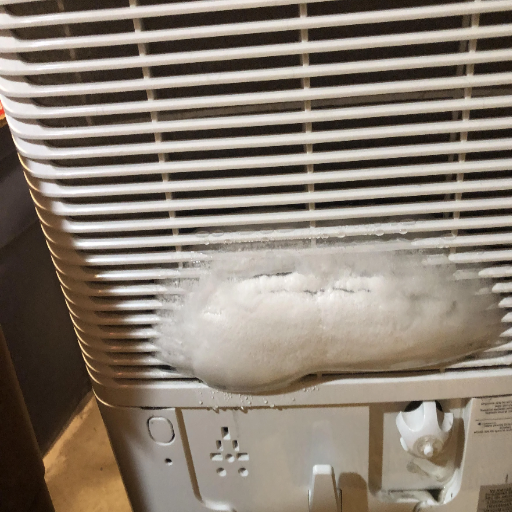
Step-by-Step Guide to Diagnose Freezing Problems
- Inspect Airflow: First, ensure unimpeded airflow into the dehumidifier. Blocked vents or filters cannot allow air through, causing the coils to cool rapidly and create ice. Clean or replace the filters; also, ensure the unit is situated in a place where the airflow is not obstructed by walls, curtains, or some objects.
- Check Ambient Temperatures: In many cases, dehumidifiers are built to operate at a certain temperature range. If the ambient room temperature dips below this range (usually 65°F or 18 °C for most models), it causes ice formation on the area of cooling coils. With a thermometer, check the room temperature; if needed, relocate the unit to an environment with a higher temperature, or an alternative is to get a dehumidifier that is rated for lower temperatures.
- Check Refrigerant Levels: A Low refrigerant charge will cause freezing since heat transfer gets affected during the refrigeration process. Look for clues indicating refrigerant leaks, like oily residue around the coils, in the device manual. Once you suspect low refrigerant levels, have a professional certified technician perform an inspection and recharge the refrigerant if found low.
- Observe the Coils for Dirt or Grime: Greasy or dirty coils inhibit heat exchange, thus one of the agents for frost formation. Power down the appliance and clean the coils using a soft brush or approved coil-cleaning solution from your manufacturer. Wait for the coils to dry entirely before turning on the unit again.
- Check the Humidity Settings: If humidity settings are wrong, the dehumidifier could become overloaded under humid conditions. Look under the target level of actual humidity on the device while adjusting it to an expected range of between 30 percent and 50 percent, depending on the conditions around you. Regular use of a hygrometer assists in monitoring and suggesting the level.
- Inspect the Defrost System: Most modern dehumidifiers are equipped with an automatic defrost system that keeps the unit from freezing. Check to ensure this function is enabled and operating correctly. If the defrost cycle has a failure, try to troubleshoot the problem by referring to the owner’s manual or by resetting the unit if suggested therein.
- Check Fan Motor: A faulty or weak fan motor may not circulate the air accordingly, producing uneven cooling and causing frozen coils. Check if the fan is working by watching the movement and listening for any unusual noise. Replace it when its performance is lacking or if it is not working at all.
- Check Drainage System: If the drainage system is blocked or inefficient in discharging water from the unit, the internal water can build up, thereby heightening the risk of freezing. Check for clogs in the drain hose or reservoir so that water is flowing out freely. Also, clean the components if needed, and verify that the inclination of any drain hoses attached is sufficient to ensure correct flow.
- Observe Electrical Systems: The faulty capacitors, relays, or thermostats disrupt normal operation of the unit, leaving it frozen. If you are familiar with electrical diagnostics, you can test electrical components with a multimeter or consult a qualified technician so that all defunct components can be replaced according to device specifications.
- Call an Expert: Should the above measures fail to clear up the freezing, then this freezing could be a symptom of a deep mechanical or system fault. Speak to a certified HVAC technician for a thorough diagnosis and repair. Also, endeavors at complex repairs could possibly void warranties or further damage the equipment, should you attempt it without proper know-how.
Systematic investigation of these potentialities can help you repair freezing problems in your dehumidifier, bringing it into excellent condition and prolonging its life.
Checking the Blower Wheel or Fan Blade for Issues
The blower wheel or fan blade is a crucial element in drawing airflow through the device. If the component does not work correctly, it could cause restricted air circulation, sluggish performance, or freezing issues. To inspect the blower wheel or fan blade, always disconnect the power supply at the wall socket to prevent the risk of electrocution. Slowly dismantle the outer casing of the dehumidifier, complying with any special instructions that are recommended by the manufacturer.
Look for any physical obstructions, such as dust deposits, dirt, debris, or foreign objects blocking the blower wheel or fan blade assemblies. Excessive dirt can cause an imbalance, whereas improper cleaning could reduce efficiency. Look out for any signs of wear and tear: cracks and damage that might need repairing. Also, check if the fan blade rotates freely and does not resist turning.
If worn or damaged, replacement of the blower wheel or fan blade should be done according to the manufacturer’s specifications for appropriate fit. Reassemble, ensuring all fasteners are tight and that parts are well aligned to avoid vibrations or mechanical aggravations. This thorough examination is important for maintaining ideal airflow and sidestepping complications that may threaten the function of the dehumidifier over time.
Assessing Airflow and Ventilation in Your Space
When measuring airflow and ventilation in your place, I want to first check if there is an obstruction to proper circulation. Such would be blocked vents, furniture placement, or even the presence of dust or debris within the ventilation systems themselves. Airflow cannot be barred; if it is, this becomes a big problem for the dehumidifier, and subsequently for the overall air quality in the environment.
Then, I check if the ventilation system can serve the size and use of the room. To help me do this, I calculate what the requirements for airflow are in cubic feet per minute (CFM), depending upon the size and purpose of the room. And then, I accordingly check these against the ratings of the HVAC or any other ventilation system that is currently in place, to ensure its suitability. With the existing air-conditioning/ventilation system, if I discover that something is not working perfectly, either in terms of the amount of air or its distribution, I try to find out why that is and to recommend some specific adjustments or upgrades.
The final check on the room involves looking at the location and condition of the dehumidifier, since that is crucial for its effective function. Such a position should ensure evenly distributed moisture removal and avert pockets of humid air accumulation. At this stage, I will hold on to my anemometer and air quality monitor, verifying that all systems measure up and surpass the standards in their operation. This methodical evaluation leads to a properly functioning system with an improved indoor air environment, plus the prevention of future problems that could arise as a result of under-ventilation.
Fixing Common Freezing Issues in Dehumidifiers
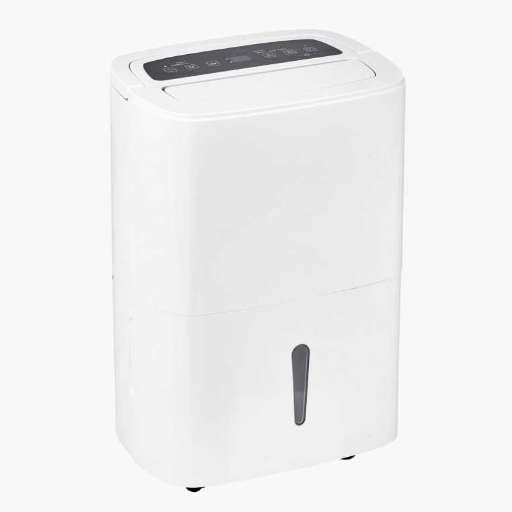
How to Unfreeze Your Dehumidifier Safely
The freezing occurs in a dehumidifier when the temperature surrounding it falls below a certain point required for efficient operations. The initial action in safely unfreezing your dehumidifier is to switch it off, followed by unplugging it to avoid any electrical hazards. The next step involves setting the unit in a warmer environment, ideally one with an ambient temperature above 65°F, allowing the ice to melt naturally. Do not rush the ice-melting process by using a hairdryer or a heat gun, as the concentrated heat applied can cause damage to the internal components of the dehumidifier.
Once the ice has melted away, make sure to give the unit a thorough inspection. Moreover, look at the state of the air filter: if dirt is preventing proper airflow, clean or replace it. Also, check that the condenser coils are not too dirty, as excessive dirt can hasten freezing. Proper maintenance and cleaning are therefore some of the main procedures to prevent the occurrence of freezing.
Lastly, adjust the settings on your dehumidifier to suit the conditions under which it operates. Most new dehumidifiers come with some form of automatic defrost, enabling it could help in the prevention of further freezing. If, after troubleshooting, your dehumidifier is still freezing, consult the manufacturer’s instructions or have it checked by a professional to see if you have a faulty thermostat or refrigerant level that is low. Proper treatment and prevention measures will help extend the working life of your dehumidifier and keep it running efficiently.
Repair Parts Needed to Fix a Dehumidifier
If you want to have a fully functional dehumidifier, you must be able to detect which part actually failed. Some of the commonly needed parts are the following:
- Humidistat: It is the control component that measures and controls the humidity level. If a humidistat deteriorates, this causes improper cycling of the dehumidifier or it stops functioning altogether. The replacement procedure includes finding the same kind of unit for the particular model of the dehumidifier.
- Compressor: Since most of the functioning of the dehumidifier is to condense the water by compressing the refrigerant gas, if any problems arise in the compressor, an effective malfunction in moisture extraction from air is caused in the unit. The replacements should be made with a compressor matching the model to avoid mismatches in operations.
- Fan Motor: The fan is responsible for drawing air and forcing it onto the coils for condensation. A failed motor can diminish the airflow or completely prevent the system from functioning. The replacement of the fan motor needs to match the specifications of the dehumidifier.
- Control board: This control board controls the electrical functions of the dehumidifier, including sensors and relay functions. Some problems with this part will appear as intermittent operation or failure to power on. To replace the control board, you must identify the part number accurately.
- Capacitor: The capacitor provides power to start the compressor and fan. A faulty capacitor can delay the start time or keep the unit from operating. When the capacitor is replaced, it must be replaced with a unit of the same electrical rating.
- Water Tank Float Switch: The float switch will control the shutdown of the dehumidifier based on the water level in the collection tank. If the switch is faulty, it could give a false indication that the tank is full, and the unit will stop. The replacement will allow correct water level discernment and uninterrupted operation.
- Filters: Filters keep debris and dust from entering the internal components of the dehumidifier. However, with time, these filters get clogged or deteriorate, thus shortening the system’s working efficiency. Regular replacement with a compatible filter is an easy and must-do maintenance task.
- Coils (Evaporator and Condenser): Frosted or damaged coils will hamper the removal process of moisture. Proper cleaning or replacement of such evaporator or condenser coils will allow them to run efficiently.
Each repair is to be made with considerations for safety and using manufacturer-approved parts. For complicated repairs on electrical components, professional help would be required to ensure proper electrical handling while not risking voiding warranties.
Preventive Maintenance Tips to Avoid Freezing
An undertaking of these steps for preventive maintenance is needed to maintain the proper functioning of HVAC systems and prevent them from freezing. These should minimize the freezing risk of a part and increase the operational working life time of the equipment:
- Regular Filter Replacements: Dirty air filters indicate restricted airflow that forces the system to work harder, which ultimately increases the chance of the coils freezing. Change the filter from 1 to 3 months depending on its usage and environmental factors such as dust and the presence of animals. Always use a filter type as recommended by the manufacturer to avoid any compatibility issues.
- Checking Refrigerant Level: Not enough refrigerant is always responsible for unbalanced temperature and freezing. The refrigerant charge has to be checked regularly so as to keep up with the level specified by the manufacturer; any leak or irregularity shall have to be addressed right away by using the correct refrigerant with certified technicians.
- Inspecting the Drainage System: When the condensate drain is blocked or slow, it can pool water that leads to freezing issues. Ensure that the drainage system is not obstructed and occasionally clean the condensate pan and drain lines to prevent buildup.
- Checking Thermostat Calibration and Settings: Thermostat misadjustments can force a system into improper operation, thereby freezing the coils. Check regularly and recalibrate the thermostat, as necessary. Check the temperature setting that is suitable for the operational capacity of the system.
- Tune-Up by Professionals: An annual inspection prevents issues from progressing, being carried out by certified HVAC technicians. At these tune-ups, professionals will examine and allow correction if necessary for the system components, including those for the blower motor, coils, and ductwork, to ensure correct operational parameters.
- Maintaining Satisfactory Airflow: Since blocked or restricted vents mean poor air circulation, which also aids in freezing, the vents should not be closed. To maintain a well-balanced distribution of conditioned air throughout the space, keep all vents unobstructed.
- Properly Seal Ducts: Leaky ducts mean uneven cooling and overworking of the system. Inspect ductwork regularly for possible holes, tears, or loose joints, and seal with approved materials such as mastic sealant or foil tape.
Among such measures, the freeze potential in one’s packages can be minimized and almost totally negated. Regular maintenance ensures increased reliability and efficiency, and almost guarantees reduced energy a key element in optimally combining operational efficiency and environmental sustainability.
When to Repair or Replace Your Dehumidifier
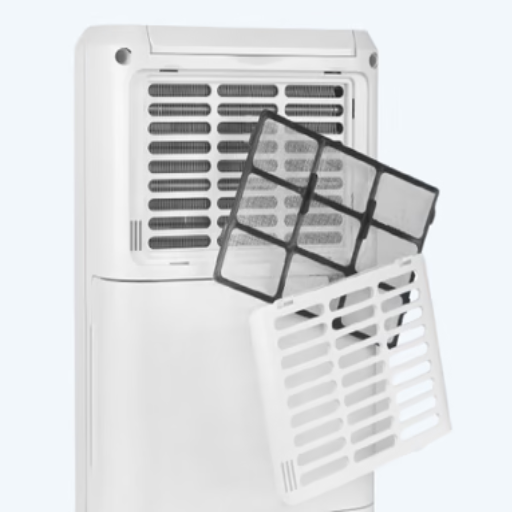
Assessing Repair Costs vs. Replacement
When repair versus replacement of your dehumidifier is at stake, a few very important facts should be considered so as to support the decision. First, look at the age of the unit. Most dehumidifiers have an average lifespan of 5 to 10 years. If it happens that the unit is close to the end of its service life, most probably, replacement would cost less than repair. However, in cases where the unit is relatively new, repair could be the right option if it is something minor, like changing a clogged filter or a bad humidistat.
Thereafter, compare the cost of repair to the price of a new dehumidifier. It has been commonly said that repair is worthwhile only if it costs up to 50 percent of a replacement. Beyond that, it makes sense to invest in a new energy-efficient unit. Present dehumidifiers with high efficiency, excellent humidity control, and modern technology have drastically lowered long-term operating costs.
Also, check if the older model leans toward being a polluting kind of device in terms of its energy consumption and environmental impact, in contrast to the modern-day units that carry the ENERGY STAR label and hence have been tested for meeting stringent criteria of energy-saving, keeping down utility bills and carbon footprints alike. The older an efficient system is, the greater the chances of it requiring replacement with one offering better performance and higher sustainability.
Then it is about the frequency of repairs. Consistent malfunctions point out that its reliability is continuously fading at an increasing operational cost, thus tilting the option more to replacement. Weighing these points carefully will allow you to make an informed decision, balancing cost, efficiency, and long-term reliability.
Long-Term Solutions for Persistent Freezing Issues
Freezing issues can be addressed by advanced diagnostic tests, designing corrective upgrades, and considering preventive maintenance. A comprehensive inspection of the thermal management of the system is first and foremost. Freezing situations usually occur due to poor environmental control systems or defective sensors. Repairing or replacing defective components such as temperature sensors, cooling equipment, or insulation materials is therefore vital to prevent any operational interruptions.
Second, provide an upgrade to stronger and more efficient hardware to stop freezing from ever occurring to the greatest degree possible. In other words, refrigeration or HVAC systems installed today usually have advanced control algorithms that maintain constant set conditions dynamically to some extent and thus prevent prolonged freezing. Furthermore, an IoT-enabled system collects detailed data on operating parameters combined with predictive analytics, thereby providing real-time alerts before one could suffer unexpected failures.
Another thing is to put in place maintenance routines. These include cleaning air filters, testing thermostats, and recalibrating important components whose proper functioning ensures that a system remains within nominal operating parameters.
Lastly, promoting an energy-efficient design from the perspective of manufacturers implementing the very latest design standards will bring in cost-saving opportunities coupled with reliability improvements as time goes by. This serves to guarantee long-term solutions to ensure the system foundation stays intact while also limiting freezing from either popping up time and again operationally, along with minimizing operational costs in such a demanding environment.
Choosing the Right Dehumidifier for Your Needs
The right dehumidifier for your needs is offered to you depending on a number of technical factors-Working on which these factors that directly influence its efficiency and suitability are applied to your environment. The first examination should be of the size of your area and the capacity of the dehumidifier, generally pints per day of dehumidification. For small rooms ranging up to 300 square feet, the 20-30 pints per day rated models are okay; larger areas such as basements with square footages greater than 1,000 may require 50-plus-pint rated units.
Relative humidity (RH) poses one of the key considerations. If the environment is above 60 percent RH, then you must select a dehumidifier that has high extraction rates so that there will be no mold followed by condensation on the surface. For optimum comfort and energy efficiency, it is advisable that a unit with an inbuilt hygrometer and automatic humidity control system should be selected.
Energy-efficient models will ensure a lower maintenance cost and hence will directly affect the operating cost. Look for ENERGY STAR®-rated units, which meet strict efficiency specifications and account for low power consumption without compromising performance. Another factor to consider is noise levels; modern units equipped with variable-speed fans and power-inverter compressors ensure operational noise is kept to a minimum so as not to disturb in any way while placing it in a residential or work setting.
Lastly, while looking at the features, consider the units that offer a continuous drainage option for truly hands-free operation, the environmentally friendly refrigerant type (such as R-410A or R-32), and air filters for better indoor air quality. Top-end models also offer smart connectivity, allowing monitoring and control through mobile applications. Looking into these factors will make your act of choosing a perfect dehumidifier a truly informed one that perfectly fulfills the needs posed by the environment and the consumer alike.
References
-
Dehumidifiers – University of Michigan
This source provides insights into dehumidifier functionality, including how they manage water vapor and avoid freezing issues. -
Dehumidifier Use in the U.S. Residential Sector – Lawrence Berkeley National Laboratory
This publication explores dehumidifier features, including frost sensors that prevent freezing by defrosting icy coils.
Frequently Asked Questions (FAQ)
Q: Why is my dehumidifier freezing up?
A: A dehumidifier freezing up can occur due to several reasons, including low ambient temperatures, a blockage in the airflow, or issues with the humidity or temperature sensor. Ensuring that the dehumidifier is placed in an environment above 65 degrees Fahrenheit and that the coils are free from ice build-up can help alleviate this problem.
Q: How can I prevent my dehumidifier from freezing?
A: To prevent your dehumidifier from freezing, ensure it is placed in a warmer area with temperatures above 65 degrees Fahrenheit. Additionally, regularly monitor the relative humidity level and make sure the filter is clean to allow proper airflow. Keeping the coils from icing is essential for optimal performance.
Q: What should I do if my dehumidifier is placed in a cold area?
A: If your dehumidifier is in a cold area, consider moving the dehumidifier to a warmer location. This will help maintain the temperature of the evaporator coil, preventing it from freezing. Also, you may need to adjust the humidity settings to ensure it operates efficiently.
Q: How can I fix my dehumidifier if it keeps freezing?
A: To fix a dehumidifier that keeps freezing, first check the fan motor to ensure it is functioning properly. Inspect the coils for any ice build-up and let it thaw if necessary. Additionally, check the humidity or temperature sensor for accuracy, as it may need to be replaced if malfunctioning.
Q: What role does the fan play in preventing a dehumidifier from freezing?
A: The dehumidifier fan helps circulate warm air around the coils, which prevents them from icing. If the fan is not working correctly, it may lead to coils that are freezing. Regularly checking the fan and ensuring it runs smoothly is crucial to avoid freezing issues.
Q: Can low humidity cause my dehumidifier to freeze?
A: Yes, low humidity levels can cause a dehumidifier to freeze. When the humidity is low, the coils can become too cold, leading to ice formation. It’s important to monitor the relative humidity and adjust the dehumidifier settings accordingly to maintain optimal performance.
Q: How often should I inspect the coils of my dehumidifier?
A: You should inspect the coils of your dehumidifier at least once a month, especially during high humidity periods. If you notice signs of icing, it may indicate that the dehumidifier needs maintenance or that the airflow is blocked.
Q: What does it mean if my dehumidifier is icing up?
A: If your dehumidifier is icing up, it typically indicates that the coils are freezing due to low temperatures or airflow issues. This can hinder the dehumidifier from working effectively, and you may need to let it thaw or check for blockages that could be causing the problem.
Q: Is it normal for a dehumidifier to freeze in low temperatures?
A: It is not uncommon for a dehumidifier to freeze in low temperatures, especially if the environment is below 65 degrees Fahrenheit. To avoid this, ensure the unit is used in a suitable environment and consider using a defrost feature if available.

